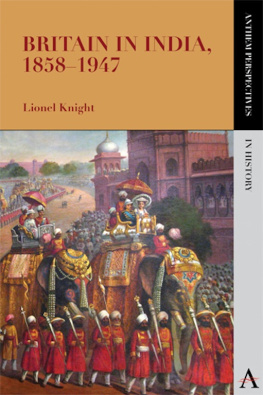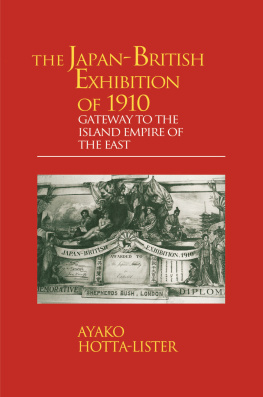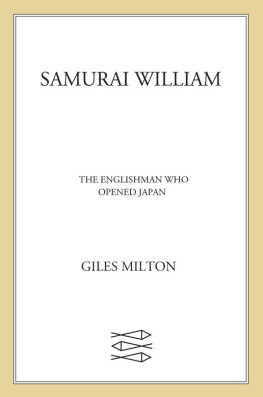GREAT BRITAIN AND THE OPENING OF JAPAN
1834-1858
Great Britain and The Opening of Japan 1834 - 1858
W. G. Beasley
GREAT BRITAIN AND THE OPENING OF JAPAN
1834-1858
First published 1951
by Luzac & Co.
Published 2013
by Routledge
2 Park Square, Milton Park, Abingdon, Oxon OX14 4RN
711 Third Avenue, New York, NY 10017 USA
Routledge is an imprint of the Taylor & Francis Group, an informa business
W G Beasley 1951 & 1995
All rights reserved. No part of this publication may be reproduced or transmitted in any form, or by any means without prior permission in writing from the Publishers, except for the use of short extracts in criticism.
British Library Cataloguing in Publication Data
A CIP catalogue record for this book is available from the British Library
ISBN 978-1-873-41043-1
ISBN 978-1-315-07330-9 (eISBN)
Contents
- For Townshend Harris read Townsend Harris throughout, that is, on the following pages/lines: xi/14, 156/19, 166/16, 166/24, 171/8, 177/27, 179/9, 217/23, 218/31, 220/3, 220/24, 224/col, 2/41, and also in the following notes, 116/n.l7, 183/n.43, 184/n.46.
- p. xiv, n.2, for yielded a revenue read produced an estimated crop
- p. 7, n.l4, for Pondon read London
- p. 38/29, for Shimazu Saihin read Shimazu Nariakira
- p. 40/13, for the senior of the read one of the senior
- p. 59/17, for irrestible read irresistible
- p. 108/20, for revenues read crop values
- p. 108, n.55, for fief revenues read fief values
- p. 121, n.30, for Galhoku read Gaikoku
- p. 150/3, for enentitle read entitle
- p. 177/16, for metuke read metsuke
This monograph was written in the aftermath of a war in which Britain was one of the victors and Japan one of the vanquished. In those circumstances its subject-matter was conceived to be an early chapter in a story which ended with that war, leading through alliance to conflict in the relations between Britain and Japan, while making it steadily more apparent over time that the lead taken by America in the world's dealings with Japan was not just the product of mid nineteenth-century opportunity.
The perspective today is very different. The Pacific War of 1941-45 marked the irreversible decline of British power in East Asia, shortly (1997) to be completed by the surrender of Hong Kong, For Japan it initiated a new phase in both domestic and international policies. Between 1850 and 1900 Japanese governments had pursued the goal of 'national wealth and strength' in Western guise, treating trade and industry for the most part as a contribution to the country's military potential. After 1945, however, the emphasis shifted. Wealth itself became a prime objective, both as a means of repairing a society shattered by defeat and as a route to international reputation. Historians responded to that change. They concerned themselves more with the origins and nature of the 'economic miracle', hardly at all with nineteenth-century diplomacy.
In such a context an account of the British contribution to the opening of 'closed' Japan does not seem to have a great deal to contribute. After all, a narrative ending in 1858 touches only at the margins of those forces which were to shape Japanese development for the rest of the century and beyond. The ten years after 1858 were more important. Similarly, for the study of British imperialism, which the book also addressed, Japan proved to be too inconsiderable an issue in the making of policy for an examination of the decisions taken concerning it to throw much light on key general questions, such as the comparative significance of economic ambitions and strategic interests. For these purposes China is much the better object of attention.
Nevertheless, it does not follow that no useful purpose is served by turning back to the events which are here described. The treaties of the 1850s, in the making of which Britain played a considerable part, both directly as an actor and indirectly as a looming threat off-stage, had a lasting effect on Japanese attitudes towards the outside world, helping to make Britain a model of 'wealth and strength' in Japanese eyes for much of the modern period. From a different viewpoint, Britain's own contrasting experience in China and Japan, dating from these years, laid the foundations for a continuing ambivalence in British policy with respect to those two countries. One can still usefully distinguish between Old China Hands and Old Japan Hands among British diplomats. It is useful, too, to be reminded of changing patterns: of how greatly personal and local initiatives determined Western actions in that distant part of the world before the days of the telegraph and telephone; of how recently Japanese political structures were predominantly feudal; of what was then a close, but is now a fast-disappearing relationship between naval power and trade.
In the text of this book, as originally published, there were a number of errors. Some of these were typographical, but two in particular were mistakes on the author's part: the consistent misspelling of the given name of the American consul, Townsend (not Townshend) Harris; and the assumption (on three occasions) that the official valuation of Japanese feudal territories was a statement of revenue (whereas it was in fact the tax collector's estimate of total crop). These errors have been corrected in the list of errata included in the present edition.
TWICKENHAM, 1995
W.G.B.
Japanese names. Japanese personal names are given in the usual Japanese order, i.e. family name followed by given name (e.g. Ii Naosuke, where Ii is the family name).
Japanese titles. With few exceptions, the formal titles of Japanese feudal lords have no geographical significance and are therefore given in the Japanese form, e.g. Kamonno-kami (Ii Naosuke's title) or Bitch-no-kami (Hotta Masayoshi's title). Where titles are descriptive, i.e. designate the actual fief or province held by a feudal lord, it has been thought better to translate them. For example, Ii Naosuke can also be described as ' lord of Hikone ' and Hotta as ' lord of Sakura '.
Japanese dates. The dates found on Japanese documents of this period are usually in the form of references to year-periods ( neng ), with month and day according to the Japanese lunar calendar. Where such documents are cited in footnotes, the date is wherever possible changed to the exact Gregorian equivalent. In some documents, however, only month and year are given, and these do not correspond exactly with those of Western calendars. Where these are cited, therefore, the year is given first according to the Gregorian calendar, followed by the Japanese (lunar) month and (in brackets) the Gregorian equivalents for the first and last days of that month, e.g. 1856, 8th. month (30 August-28 September).
Introduction
The Seventeenth Century
FOR over two hundred years, under Tokugawa rule, the ports of Japan were closed to Western ships and commerce, save only for a limited trade conducted by the Dutch at Nagasaki. In 1853, however, Commodore Perry of the United States Navy led his squadron of " Black Ships " into Edo Bay to deliver a letter from the President and request a treaty of commerce and friendship with Japan. In the following year, having given the Japanese time to consider his proposals and meditate upon his display of force, he returned to conclude the first of the nineteenth-century conventions with that country. The work Perry began was completed by Townshend Harris in July 1858, when the Treaty of Kanagawa opened Japan to American trade; and the lead so given was followed by other Western countries anxious to establish treaty relations. After 1854, and again after July 1858, British, French, Russian and Dutch representatives hastened to conclude similar agreements. For Britain, Rear Admiral Sir James Stirling negotiated at Nagasaki in 1854 and Lord Elgin at Edo in 1858. Neither succeeded in making any important change in the treaty-pattern established by the Americans.











